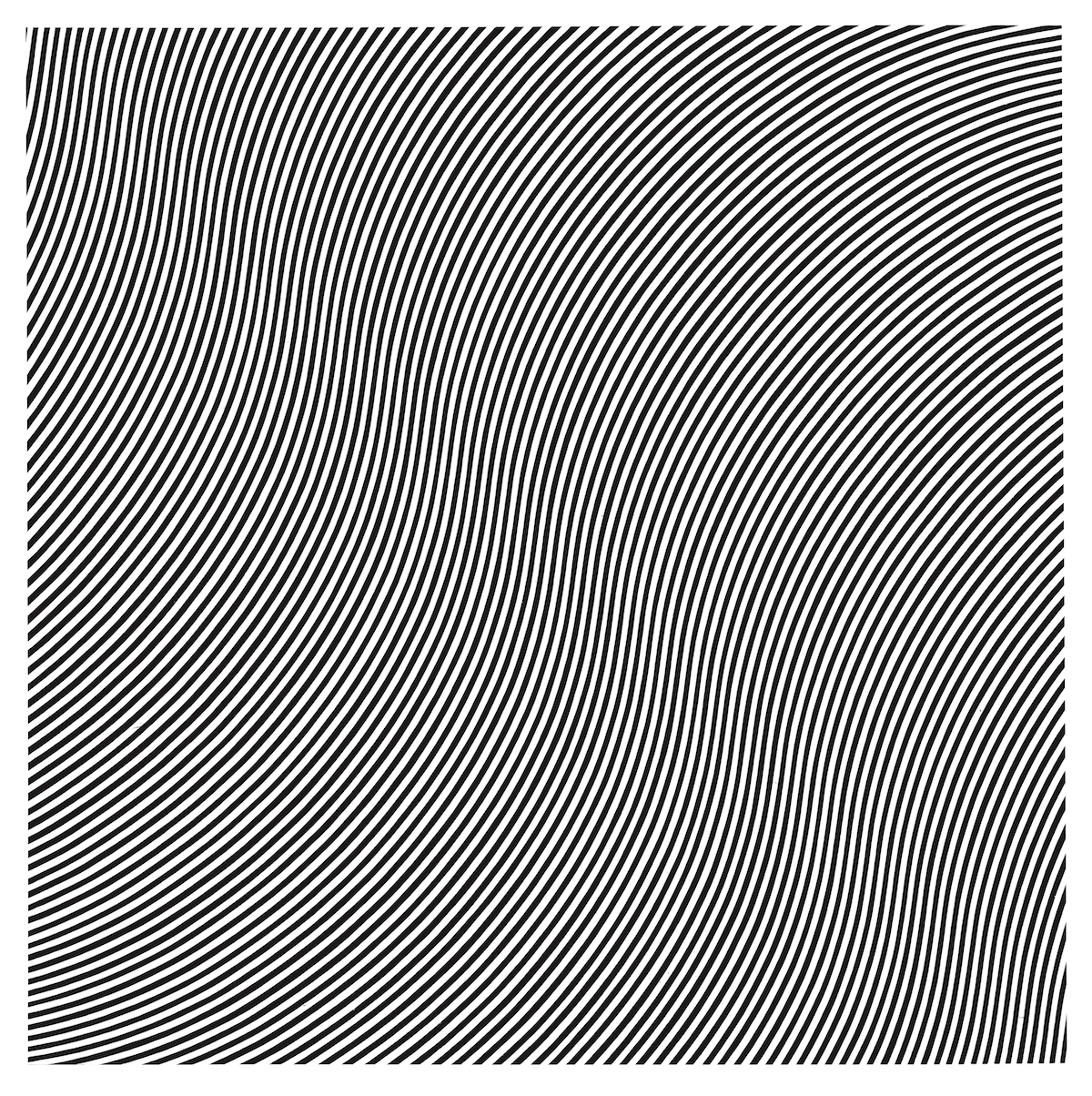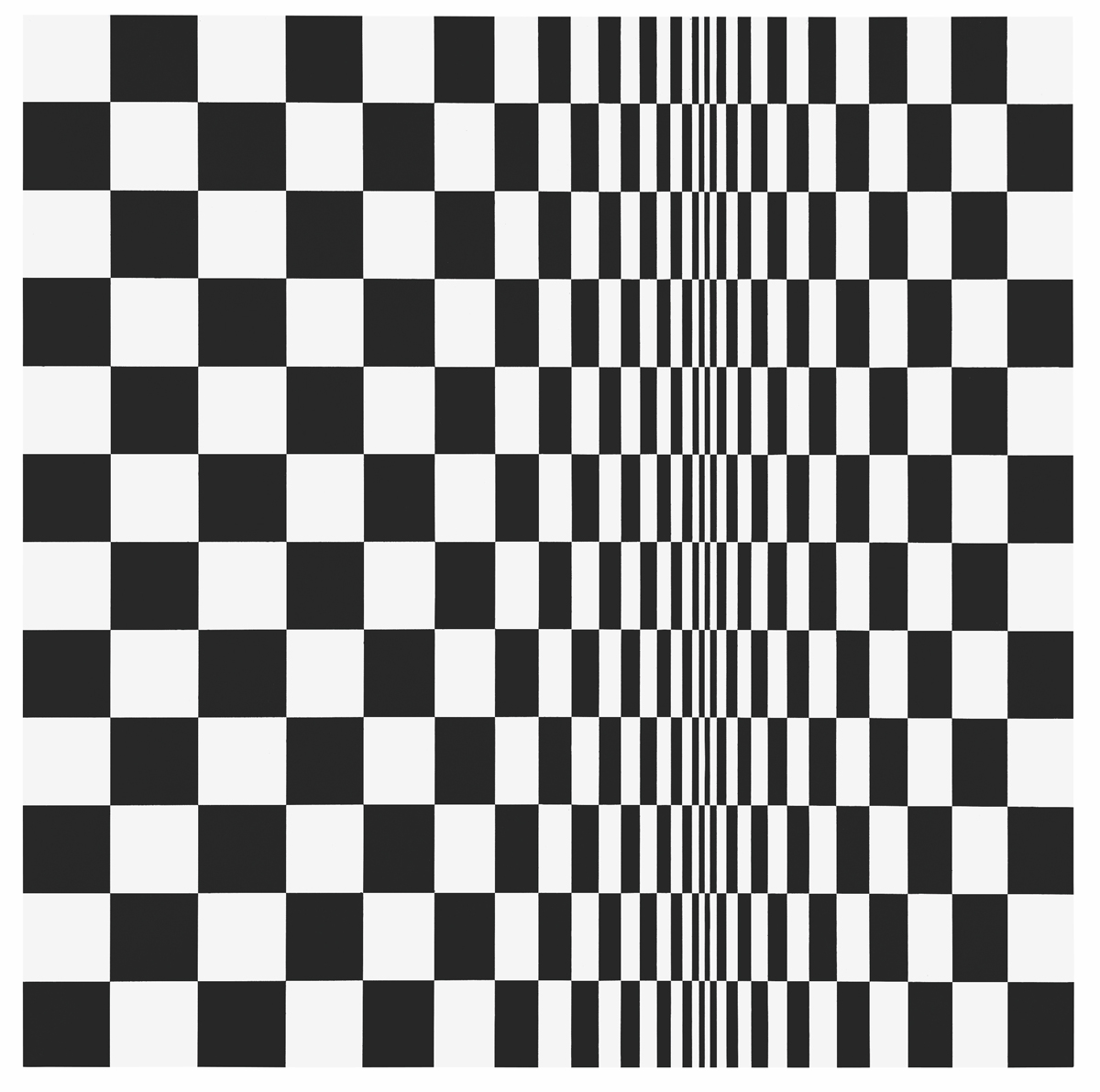[ad_1]

Bridget Riley, Over, 1966.
©2019 BRIDGET RILEY, ALL RIGHTS RESERVED/NATIONAL GALLERIES OF SCOTLAND
With a Bridget Riley retrospective on view at the National Galleries of Scotland in Edinburgh and a biography of the artist soon to come, we turn back to the October 1965 issue of ARTnews, which included an essay by Riley called “Perception Is the Medium.” Written in response to reviews of “The Responsive Eye,” a group exhibition of Op art and kinetic art at New York’s Museum of Modern Art that had been widely derided by critics at the time, Riley aimed to correct some misunderstandings about her work. “It also surprises me that some people should see my work as a celebration of the marriage of art and science,” she writes. Her essay follows below. —Alex Greenberger
“Perception Is the Medium”
By Bridget Riley
October 1965
The American scene has an impressive reputation in Europe, and we hold the achievement of many American artists in high respect. When I paid my first visit to the U.S.A. last March I felt confident that my work, whether liked or not, would be judged with both insight and discrimination. I left three weeks later with feelings of violation and disillusionment, relieved only by the enormous warmth with which I was received by many individuals.
What had happened? I had had a number of conflicting experiences. My work had been hung in the Museum of Modern Art and vulgarized in the rag-tag. I had been involved in a sociological phenomenon with alarming implications, and one which was disquieting, also, to many Americans. “The Responsive Eye” was a serious exhibition, but its qualities were obscured by an explosion of commercialism, bandwagoning and hysterical sensationalism. Understandably, this alienated a section of the art-world. Most people were so busy taking sides, and arguing about what had or had not happened, that they could no longer see what was actually on the wall. Virtually nobody in the whole of New York was capable of the state of receptive participation which is essential to the experience of looking at pictures. Misunderstandings and mistaken assumptions took the place of considered and informed judgment.
For this reason I should like to offer some basic information:
To begin with, I have never studied “optics” and my use of mathematics is rudimentary and confined to such things as equalizing, halving, quartering and simple progressions. My work has developed on the basis of empirical analyses and syntheses, and I have always believed that perception is the medium through which states of being are directly experienced. (Everyone knows, by now, that neuro-physiological and psychological responses are inseparable.)
It is absolutely untrue that my work depends on literary impulse or has any illustrative intention. The marks on the canvas and the essential agents in a series of relationships which form the structure of the painting. They should be so complete as to need, and allow of, no further elucidation. The basis of my paintings is this: that in each of them a particular situation is stated. Certain elements within that situation remain constant. Others precipitate the destruction of themselves by themselves. Recurrently, as a result of the cyclic movement of repose, disturbance and repose, the original situation is re-stated.

Bridget Riley, Movement in Squares, 1961, synthetic emulsion on board.
©BRIDGET RILEY 2019, ALL RIGHTS RESERVED/ARTS COUNCIL COLLECTION, SOUTHBANK CENTRE, LONDON
I feel that my paintings have some affinity with happenings where the disturbance precipitated is latent in the sociological or psychological situation. I want the disturbance or “event” to arise naturally, in visual terms, out of the inherent energies and characteristics of the elements which I use. I also want it to have a quality of inevitability. There should, that is to say, be something akin to a sense of recognition within the work, so that the spectator experiences at one and the same time something known and something unknown. I identify with this “event.”
Other polarities which find an echo in the depths of our psychic being are those of static and active, or fast and slow. Repetition, contrast, calculated reversal and counterpoint also parallel the basis of our emotional structure. But the fact that some elements in sequential relationship (the use, e.g., of greys or ovals) can be interpreted in terms of perspective or trompe-l’oeil is purely fortuitous and is no more relevant to my intentions than the blueness of the sky is relevant to a blue mark in an Abstract-Expressionist painting.
It also surprises me that some people should see my work as a celebration of the marriage of art and science. I have never made any use of scientific theory or scientific data, though I am well aware that the contemporary psyche can manifest startling parallels on the frontier between the arts and the science. (Once, for example, I spent three weeks on a curve which was of vital importance for one of my paintings. Just as I had pinned up the final drawing on the wall of my studio, someone brought in a friend who was working on a secret project which involved the accumulation of energy. He also had begun work three weeks earlier on a particular problem, and the curve on which he had decided for his solution was identical with mine.)
I am writing only of my own work. Other artists now working in the Op field may agree with me partially or altogether, and some may not agree at all. Knowledge of painter’s intentions may be of interest, but in the last analysis stance alone with never make a work of art. Ultimately the degree of visual sensibility is the vital agent in transforming a concept into the indefinable experience which is presented by a work of art.
[ad_2]
Source link

